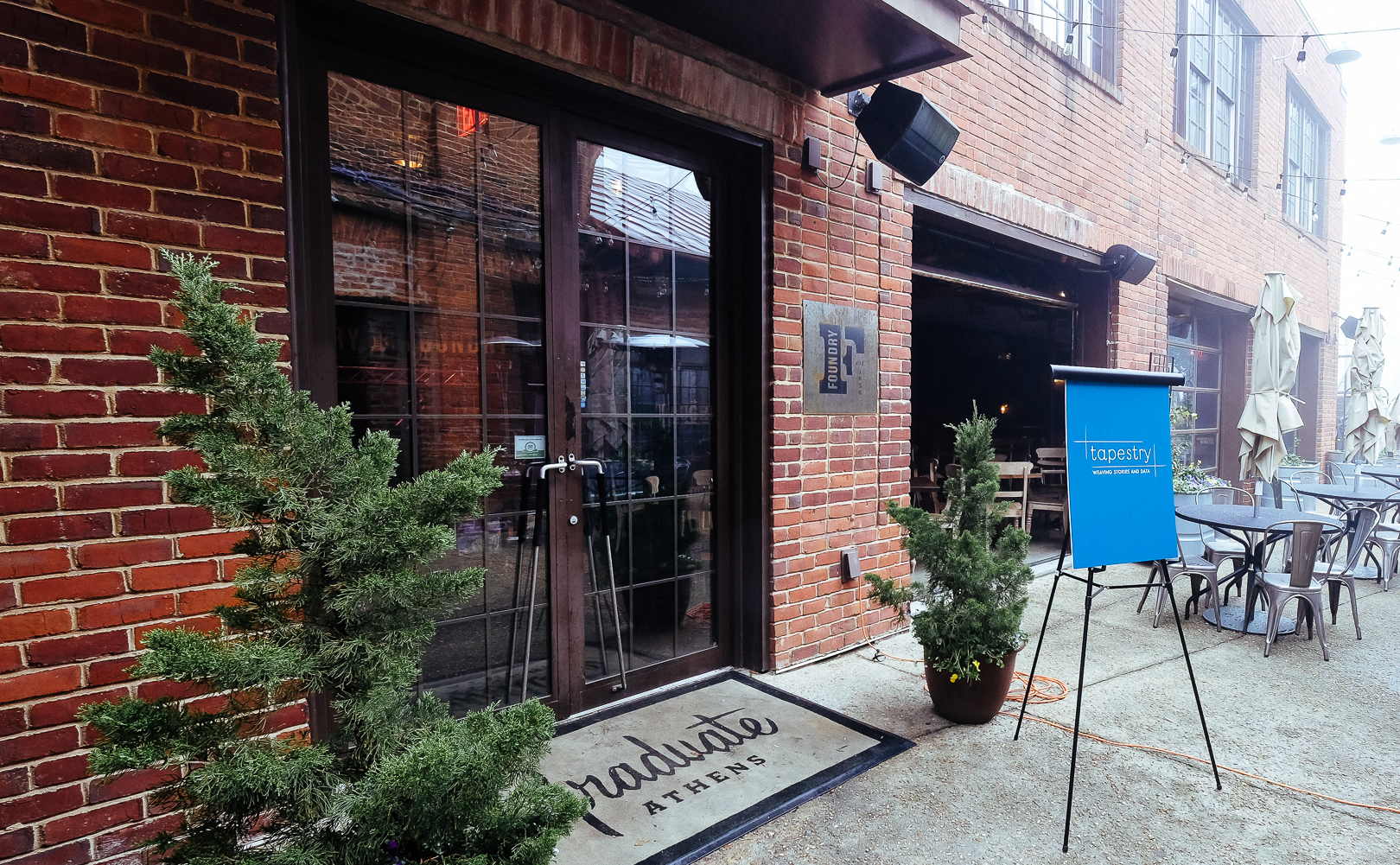
Tapestry 2016 Open For Applications
Tapestry 2016 will take place March 9 next year in a historic hotel near Denver, CO. We have put together another exciting line-up of keynote speakers and are looking for applications from people who want to attend or speak.
The goal behind Tapestry is to connect people who are interested in storytelling with data. It's a small conference (about 130 people), and very focused. We are very picky about speakers and attendees, but that also means that we get a density of conversations about storytelling and data that you won't find anywhere else.
If you want to attend, fill out the request an invite form on the website and you should hear back from us within about two weeks. This is also the place to suggest a topic for a presentation or a demo. As I said, we are very picky, and we are trying to find a good mix between the different kinds of people who want to attend. So giving us more information about what you do and why you want to attend helps us tremendously (and increases your chances of being accepted).
The main audience for Tapestry are journalists, designers, and people working in government or non-profits who are trying to communicate with data. Academics are another group we want to encourage, and perhaps the most underrepresented group so far. We always mix in interesting people from industry, etc., though, to keep things from getting stale.
We also like to pick unusual and topical venues. Next year’s is a doozy: The Stanley Hotel inspired Stephen King to write The Shining. It is located in the mountains near Denver (where NICAR will take place right after Tapestry), in a stunningly beautiful environment.
Keynote Speakers
The format of the conference includes three hour-long keynotes, six short stories, as well as a demo session and ample time for socializing and discussions.
Our first speaker at the 2016 conference will be Scott Klein, Assistant Managing Editor at ProPublica. Scott has a lot of experience in building incredible news applications, and has won many awards for his work. He is also a history buff, interested in the way data has was used for finding and reporting stories long before computers. I linked to his incredible piece on Horace Greeley a while ago, and I expect him to discuss a variety of interesting and colorful characters and examples.
Jessica Hullman is a professor at University of Washington’s iSchool. She has done some groundbreaking work exploring the use of data visualization for narrative, in particular on visual rhetoric and sequence in data stories. Her work on the potential usefulness of visual difficulties has also generated a lot of interest and discussion. I don’t know much about her planned talk yet, but I’m sure it will be thought-provoking and interesting.
Nick Sousanis is a post-doc at the University of Calgary, and the author of the amazing book/comic/Ph.D. thesis Unflattening. His thinking about images and words, how they relate to each other, and how we can go beyond our entrenched ways of seeing the world is unique and inspiring. There are some parallels with Scott McCloud’s ideas (besides the obvious one of both dealing with comics), which will provide food for thought and conversations at the end of the conference.
Social Events
An important part of Tapestry are the breaks and happy hours. We have a reception the night before the actual conference, which helps break the ice and get people acquainted so there is more interaction during the actual event. We also have generous breaks and a happy hour after all the talks. The latter is mainly for the people who are staying the night and not taking off to go to NICAR (we provide transportation for those who do).
Need more details and only trust what’s written in peer-reviewed journals? I wrote a CG&A Vis Viewpoints article on Tapestry earlier this year.
Posted by Robert Kosara on November 15, 2015. Filed under tapestry.

